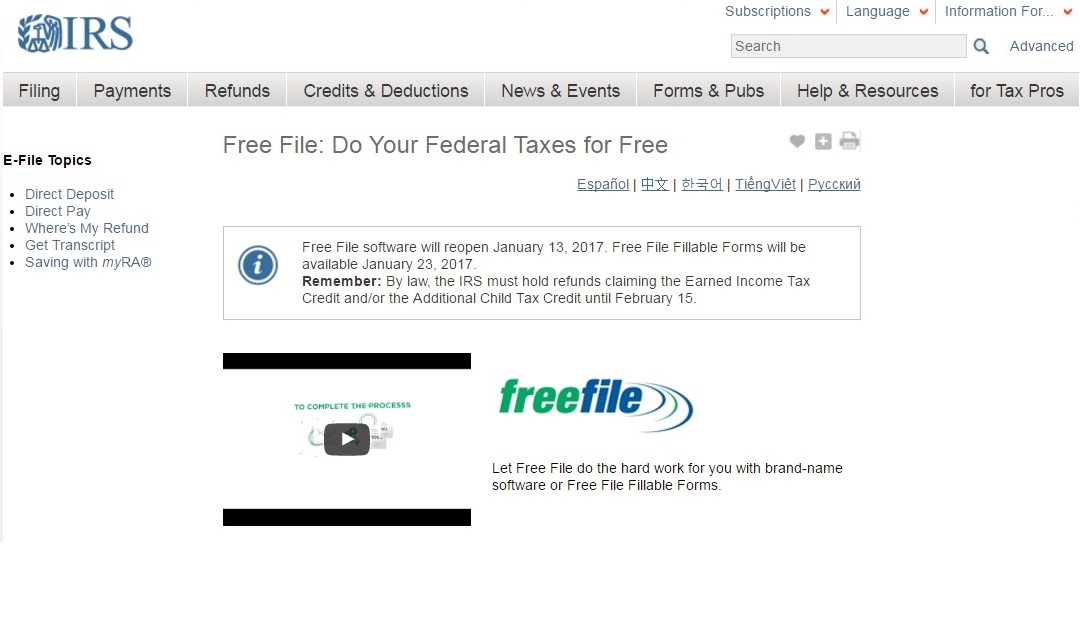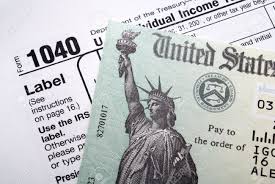The first Friday the 13th of 2017 is lucky for some taxpayers. That’s the day that Free File once again opens, allowing eligible folks to electronically prepare and file their 2016 tax returns.

The Internal Revenue Service hasn’t yet issued an official announcement about Free File 2017, but if you pursue the IRS website (c’mon, I know I’m not the only one doing this!) you’ll find the agency has updated its Free File page, a screenshot excerpt of which is shown above.
And it says Free File will be available on Friday, January 13. That’s 10 days before the official January 23 opening of this year’s tax filing season. Kind of have you rethinking the bad rep Friday the 13th gets, doesn’t it? The early access to Free File is not that uncommon. Last year the IRS gave Free File users a weekend head start.
Now don’t get too excited. The early opening of Free File doesn’t mean that IRS employees will be working on these returns during the countdown to the official start of the 2017 filing season. But it does mean your Free File return will be in the processing queue.
Even better, it means if you’re ready to file by Jan. 13 and can use Free File, then you can get this annual tax task out of the way even sooner.
What is Free File? In case you’re new to Free File, it’s the government/private tax industry partnership that’s entering its 15th tax filing season.
Each year, participating tax software manufacturers (13 in total last year) provide a version of their programs to the online no-cost tax prep and e-filing service. You’ll find a Free File link on the IRS.gov homepage.

Qualifying filers (which the Free File Alliance says is around 100 million people or 70 percent of taxpayers) can then select the software that fits their filing needs, fill out their returns and send the material electronically to the IRS.
Boom! Taxes are done. Online. For free.
Some of the participating Free File companies even offer state tax filing services.
In this case, though, carefully read the options. There could be additional eligibility requirements, as well as a cost to e-file your state taxes.
That’s why you might want to check with your state’s tax office. Most of the 43 states and District of Columbia that require income tax returns from their residents offer free or reduced-cost online filing on their state websites.
So check with your state before paying even a nominal amount to a Free File state return provider.
Sure, it won’t be as convenient to split up online filing duties between two separate websites, but if free is the most important thing to you, then you gotta do what you gotta do at all filing levels.
Who qualifies? OK, now you’re jazzed about using Free File. Sorry to slow your roll, but if you make over a certain amount of money, you’re out of free tax preparation and e-filing luck.
For the 2017 filing season, you can use Free File only if your adjusted gross income (AGI) is $64,000 or less. That’s a $2,000 income eligibility increase over last year’s cut-off amount.
Yes, I know the screenshot below says “below” $64K, but in the past, if you were right on the dot dollar-wise you still got to use Free File. That’s the same deal this year. (Thanks to the IRS for confirming this and pointing me/us to the Free File FAQ page.)

And that income limit applies to all taxpayers, regardless of filing status.
So a jointly filing married couple with combined incomes of $64,000 can use Free File this year, as can a single woman or unmarried dad raising his kids alone as a head of household taxpayer.
Free Fillable Forms for others: But don’t despair if you’re over the Free File income limit. You have another option.
You can use the online program’s free fillable forms. Here the IRS makes available electronic versions of many common tax forms and schedules. You simply go online, click the Fillable Forms option and start entering your tax data.
The one downside here is that there’s no software to walk you through the filing process. You need to know what forms you need and then enter the info into them. There’s also no automatic transfer of the data from one form to another, for example, moving your Schedule A itemized deductions from line 29 of that form to line 40 of Form 1040.
But at least the fillable forms option does do the math for you once you enter the figures on your forms.
And it’s better than writing it in by hand on paper forms (sorry, filing traditionalists, but I love the electronic option) or paying for software if you know what forms you need and are comfortable completing them without added guidance.
Once you enter all your tax info onto the computerized forms, then you can e-file your return at no cost.
Note, however, that the fillable forms won’t be available until the full, official start of the 2017 tax season on Jan. 23.
And since it’s Uncle Sam’s tax folks providing this option, there is no state tax fillable forms. But, as I mentioned earlier, your state’s tax office most likely can help you here.
Whichever free online filing option you can use, get ready. It’s closer than we thought!
